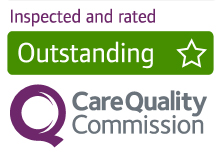Downloaded from www.mymenopausecentre.com
Direct URL: https://www.mymenopausecentre.com/managing-hot-flushes/hot-flushes-cooling-pillows/ultimate-guide-to-pillow-coolers-for-managing-menopause-hot-flushes/
Ultimate Guide to Pillow Coolers for Managing Menopause Hot Flushes
Hot flushes and night sweats (known as vasomotor symptoms) during the menopause can bring about significant discomfort. This article explores how pillow coolers can help alleviate these symptoms, ensuring a cooler, more comfortable night's sleep.
Explore
What Are Pillow Coolers
Pillow coolers are designed to maintain a cool sleeping environment. They work by regulating the temperature around your head, which can be particularly helpful in managing night-time hot flushes (night sweats). These either use gel technology or are water-cooled to absorb and dissipate heat, which can help with getting a good night’s sleep.
- Water-cooled systems: These involve circulating cool water through a pad.
- Gel-based coolers: These use a specially formulated gel that reacts to your body temperature to absorb excess heat.
Advantages of Pillow Coolers During Menopause
Using a pillow cooler can be beneficial in the following ways:
- Improved sleep quality: By reducing the discomfort of hot flushes an night sweats, pillow coolers can help in achieving a deeper, more restful sleep.
- Consistent sleep temperature: They can help maintain a steady, comfortable temperature throughout the night, thus minimising awakenings.
- Portable and convenient: Most pillow coolers are lightweight and easily portable, making them convenient for travel.
How to Select the Best Pillow Cooler
The choice largely depends on individual needs and preferences, which can vary widely from one person to another. Here are some things to consider if you’re thinking of getting one:
- Consider the type: First and foremost, decide which type of cooling technology best meets your requirements. If you prefer a cooling mechanism that can be adjusted for varying degrees of coolness, a water-cooled system might be ideal. Alternatively, if you seek a simpler solution, gel-based coolers are effective and hassle-free, as they don’t require any setup or maintenance.
- Check the size: It’s good to ensure that the pillow cooler matches the dimensions of your existing pillows (unless you are happy to buy a new one). Some coolers are designed to fit standard pillow sizes, while others may need specific models or have unique measurements.
- User reviews: Check out what other users have to say about a product, in particular about its performance and longevity. Look for consistent patterns in the reviews that could indicate potential strengths or weaknesses of the pillow cooler. Checking a variety of sources can help you gather a more balanced view.
By assessing these aspects, you can find a pillow cooler that not only meets your specific needs but also helps you get a better night’s rest. Remember, the right choice can drastically improve your sleep quality and, by extension, your overall health and well-being.
Setting Up and Caring for Your Pillow Cooler
Ensuring your pillow cooler is properly installed and maintained is crucial for achieving optimal performance and longevity. Here are some detailed guidelines to help you manage your cooling device effectively:
- Installation: It is imperative to adhere to the manufacturer’s instructions meticulously when setting up your pillow cooler. Make sure all components are correctly assembled and connected to ensure it functions as intended. Avoid any shortcuts during assembly to prevent any potential issues.
- Maintenance: To keep your pillow cooler in top condition, regular cleaning is essential. This not only helps in preventing the build-up of mould and dust but also ensures that the device runs efficiently. Check the manufacturer’s guide for specific cleaning instructions and follow them diligently.
- Storage: When the cooler is not in use, particularly during the colder months, store it in a cool, dry place. This helps in protecting the device from any damage and prolongs its effectiveness. Ensure that it is thoroughly cleaned and dried before storing away to avoid any unpleasant smells or deterioration.
By following these simple but effective steps, you can enjoy a consistently well-performing pillow cooler that contributes to comfortable, restful sleep even on the warmest nights.
Other Ways to Manage Hot Flushes and Night Sweats
Management of these menopause vasomotor symptoms is not ‘one size fits all’. The good news is that there are many options to consider.
Practical top tips
- Loose clothes – they keep you cool and mean you don’t have to worry if you sweat
- Natural fibres – many clothes are made of natural fibres such as cotton, linen, bamboo and viscose, which are breathable
- Cotton in the bedroom – sleep in loose, light cotton nightwear and use cotton sheets instead of polycotton or man-made fibres
- Bedroom temperature – try to keep it cool. Maybe open a window
- Change of clothes – a spare set of nightclothes or a towel by the bed might be helpful
- Fans – they are a great help day and night
- Cooling sprays – you can buy cooling sprays specifically aimed at menopause flushes
- Work environment – speak to your employer – can you cool down the room temperature or open a window, or keep a fan at the ready?
You can read more about clothing tips for hot flushes and night sweats on our blog.
Lifestyle changes
Avoid triggers if you can – alcohol, caffeine, hot drinks and spicy food are the main culprits, but you may notice triggers specific to you.
Stopping smoking can help too, as smoking can make hot flushes and night sweats worse[4]. The NHS is a great place to start if you need help quitting.
It’s easy to say exercise more and manage weight, and we know it can be a challenge – but there’s evidence that it can help with hot flushes[5].
Being overweight can make hot flushes and night sweats worse for some. The menopause transition can be a good time to look at your overall health and think about a plan to tackle your weight. It can be useful to focus on being healthy rather than simply losing weight (which we know is easier said than done). We offer support and advice through our friends at Her Spirit, who can help you find an activity you enjoy and provide the support to do it, and our nutritionist partner who can help with nutrition advice.
Hormone Replacement Therapy (HRT)
HRT is an oestrogen replacement therapy and it’s the most effective treatment for vasomotor symptoms for most women who take it[6]. The correct dose and how long you should take it for will depend on your symptoms.
You may feel anxious about taking HRT because of the well-publicised small risks, particularly of breast cancer. In reality, these risks are tiny for most. Lifestyle factors, such as how much you weigh and how much alcohol you drink, can have a greater impact on your risk of breast cancer than HRT.
For most women, the benefits of menopause symptom control, reduction in risk of osteoporosis and heart disease far outweigh any small risks.
You can find out everything you need to know about HRT here.
Alternative therapies
Herbal remedies can help some women. If you’re considering this route, we recommend looking for the THR mark, which stands for Traditional Herbal Registration. Registration to this scheme means that there is a guarantee that the goods bearing the mark meet certain defined standards or possess particular characteristics, as defined by the owner of the mark.
You can find more information about the THR mark here.
Black Cohosh – studies have shown that it can help with hot flushes. Although it may interact with blood pressure medicines and should not be taken by those women who are sensitive to aspirin or salicylates. It should never be taken by women taking Tamoxifen.
Sage – this can help relieve hot flushes. It shouldn’t be taken by those with high blood pressure.
Phytoestrogens – these are substances found in certain plants like soy, which can produce a weak, oestrogen-like effect on the body. There’s some evidence to suggest that women in countries where diets are traditionally rich in phytoestrogens experience fewer menopausal symptoms and have a lower rate of heart disease and osteoporosis[7].
Phytoestrogens can be taken as a supplement, such as red clover, or by increasing your intake of foods rich in them. Depending on your diet, you may need to radically change the way you eat to notice any effect. This is not recommended for women who have had breast cancer or other hormone-dependent tumours.
Soya, linseed oils and red clover are the richest food sources of phytoestrogen, others include:
- Cereals – oats, barley, rye, brown rice, couscous, bulgar wheat
- Seeds – sunflower, sesame, pumpkin, poppy, flax and linseed
- Pulses and beans – soya, chickpeas, kidney beans, haricot beans, broad beans and green split peas
- Vegetables – red onions, celery, sweet peppers, garlic, broccoli, tomatoes, bean sprouts
Relaxation techniques
Relax. It’s so easy to say, right? But it’s really important to remember to make time for what works for you. It might be yoga, relaxation breathing, meditation or anything else that helps you slow down. There are lots of great videos and apps out there that can help.
Talking therapies
There’s good evidence that cognitive behavioural therapy (CBT) can help decrease the severity and frequency of hot flushes. It can be a good alternative if you have been advised not to take HRT[8].
CBT is a therapy that helps you to challenge unhelpful and negative thoughts that get you in a vicious circle of thinking – and the outcome can improve your physical symptoms. For example, you may feel a hot flush starting and you may dread this happening because you’re at work and are embarrassed about what others will think.
As soon as the flush starts, you may start thinking negative thoughts, which may trigger a stress response that makes the physical hot flush worse.
CBT teaches you techniques to decrease stress, increase relaxation and challenge your thoughts.
Medication
If you don’t want to, or can’t take HRT, there are other medications that your doctor could prescribe.
Clonidine is a blood pressure tablet that is licensed for the treatment of hot flushes. It’s not a hormone and is not HRT.
Side effects of clonidine include dry mouth, drowsiness, dizziness, nausea and sleep interference. That said, it can help some women lead a normal life if they can’t or don’t want to take HRT. If you start clonidine and want to stop it, it’s important to stop it gradually over a week or so rather than immediately.
Antidepressants are not licenced for the treatment of vasomotor symptoms, but there’s evidence they may help[9]. Plus, they can also help with mood swings. Initial side effects include nausea, dizziness, short-term worsening of baseline anxiety and mood. It may help to start with a very low dose or even take it every other day.
See your doctor if your mood symptoms worsen significantly. Antidepressants can also affect your sex drive.
If you’re taking tamoxifen, there are certain antidepressants that you should not take, as they can make tamoxifen less effective. Venlafaxine (an SNRI) can be a good option if you’re taking tamoxifen. It can help hot flushes, improve mood and improve your quality of life, though initial side effects are common.
Gabapentin and pregabalin are also options. Side effects include dry mouth, drowsiness and dizziness, but they can improve sleep and help reduce hot flushes and sweats.
Hot flushes after cancer
Hot flushes can be a real issue for women who’ve been through breast cancer treatment. This is because treatments like chemotherapy, or removing the ovaries (oophorectomy), may force you into premature menopause if you weren’t already in the menopause transition.
Or you may have already been through the menopause when diagnosed with breast cancer. The hormone treatments can remove every last bit of oestrogen in your body so you may find hot flushes coming back or becoming more severe.
Hot flushes can be a side effect of many of the other treatments for breast cancer, such as tamoxifen, anastrozole, letrozole, exemestane and goserelin. Some women take hormone treatments to prevent breast cancer, including tamoxifen, anastrozole and raloxifene, or have their ovaries removed surgically.
Hot flushes can be more severe if you have experienced cancer treatments of oophorectomy than for women going through a natural menopause. They can result in more sleep issues and have a greater impact on your quality of life[10].
Treatment for other forms of cancer can also result in premature menopause, and again, hot flushes and night sweats can be more severe.
In terms of what to do, you may have been advised not to take HRT, depending on your type of cancer and circumstances. And some alternative medications may not be suitable for you, depending on which cancer treatments you’re taking. This is a discussion to have with your cancer specialist and menopause specialist because your individual circumstances are important.
There’s good evidence that cognitive behavioural therapy (CBT) can be effective in the treatment of hot flushes and night sweats, particularly when you have had breast cancer[11].
CBT therapy may be offered in cancer centres, through your GP, or through charities such as Maggie’s. There are good self-help resources out there as well, the Women’s Health Concern has good information.
AI/human authorship/editing: This article was created using several editorial tools, including AI, as part of the process. Human editors reviewed this content before publication
Learn more
Join the pause. community
We’ve created pause. as a space for women to come together and share stories about their menopause experience, ask questions, and to find support and inspiration. We'll also share the latest news and updates on the menopause from our experts.
Want to be the first to hear our latest news? Join our pause. community today.
Share your email to receive the latest news, updates and information on new products and treatments from My Menopause Centre and our pause. community. You can unsubscribe at any time.
We're committed to protecting and respecting your privacy - see our Privacy Policy and Terms and Conditions

Book a consultation
Whether you want to discuss your symptoms, create a treatment plan that's right for you, understand some test results or have a check-up, the highly experienced doctors and nurses in our menopause clinic are here to help you.
Book nowContact My Menopause Centre
- General enquiries: hello@mymenopausecentre.com
- Book appointments online: Log into your account and go to 'My appointments'
- Book appointments by phone: 0333 444 1067
- Website: https://www.mymenopausecentre.com


















